|
Ordovician
Fossils in the
El
Paso Limestone
| |
Updated 12/13/20

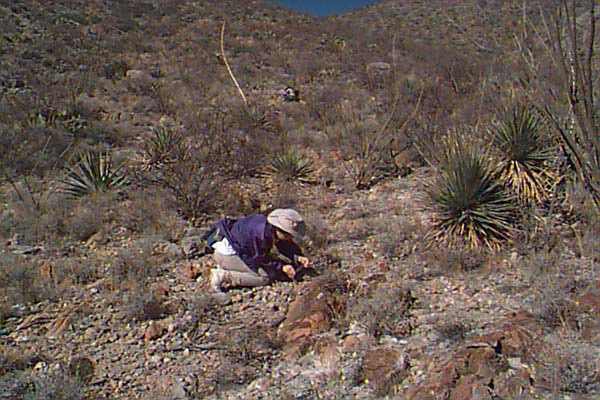 Dawn collects Ordovician fossils in the El Paso at Dos Cabezas
Dawn collects Ordovician fossils in the El Paso at Dos Cabezas
| The
El Paso Limestone lies unconformably on the Coronado Quartzite
in Greenlee county, and on the Abrigo and Bolsa Quartzite in
the Dos Cabezas Mountains. It can attain thicknesses of several
hundred feet, and is upper Cambrian to lower Ordovician in age.
Of great interest to us was the Ordovician component at Dos Cabezas,
where we found fossils of gastropods, and orthocone cephalopods
replaced with red chert in a limestone matrix. Most of the Ordovician
rocks were removed from Arizona by erosion, and what little remains
is in isolated outcrops in remote localities. |
What the Rocks Looks like:
 Click image to see Full Size
Click image to see Full Size
| The
fossils occur in chertized layers, often poorly preserved by
the diagenetic process. |
 Click image to see Full Size
Click image to see Full Size
| This
close up shows many fragments of mostly gastropods, nearly all
so poorly preserved as making it virtually impossible to identify
them beyond the phyllum level. |
 Click image to see Full Size
Click image to see Full Size
| Close
up of some of the chertized fossils that stick out of the slowly
dissolving limestones. Acid treatment will free most of them,
however they are highly pitted and fragment very easily. |
Larger Macrofossils:
 Click image to see Full Size
Click image to see Full Size
| Orthocone
nautiloid. We found dozens of this type of invertebrate in the
limestones, many were hollow with thick shells. |
 Click image to see Full Size
Click image to see Full Size
| Tip
(apex) of an Orthocone nautiloid. |
 Click image to see Full Size
Click image to see Full Size
| Nice
cross section of an orthocone showing how thick the shells were! |
 Click image to see Full Size
Click image to see Full Size
| Beautiful
section of an orthocone. The full size would have been about
30cm long. |
 Click image to see Full Size
Click image to see Full Size
| Nice
side cross section of an orthocone "Orthoceras" type. |
 Click image to see Full Size
Click image to see Full Size
| Short
length of a orthocone. |
Brachiopods:
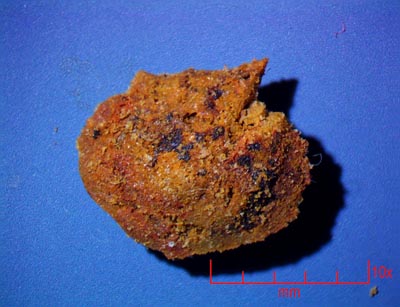 Click image to see Full Size
Click image to see Full Size
| One
of the best shaped specimens, small and symetrical. |
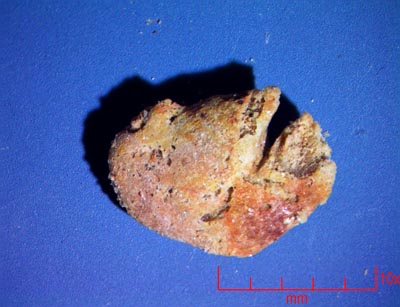 Click image to see Full Size
Click image to see Full Size
| Most
brachs were fragmentary and had large cracks in them. |
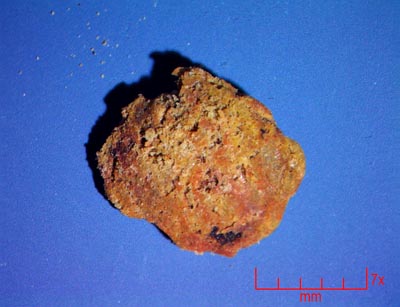 Click image to see Full Size
Click image to see Full Size
| A
more flattened brachiopod typical of finds here. |
Crinoids:
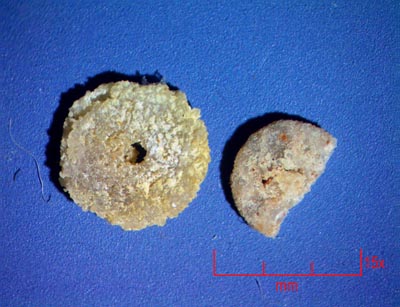 Click image to see Full Size
Click image to see Full Size
| Two
tiny crinoid ossicles were found amongst the acid fines. |
Ostracods:
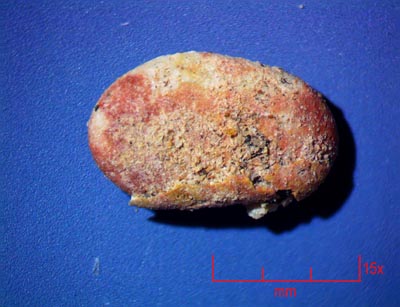 Click image to see Full Size
Click image to see Full Size
| One
Ostracod was found, this tiny bivalved arthropod was found intact,
along with many fragmentary remains. |
Short Spines:
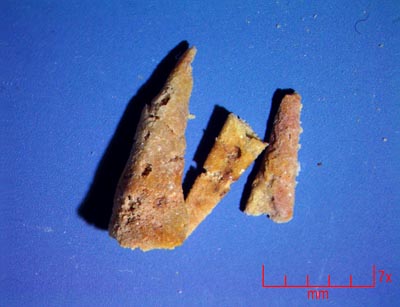 Click image to see Full Size
Click image to see Full Size
| While
these could be the terminal apex of a juvinile orthocone, more
likely was the armor points from an enchinoderm. |
Gastropods Type 1:
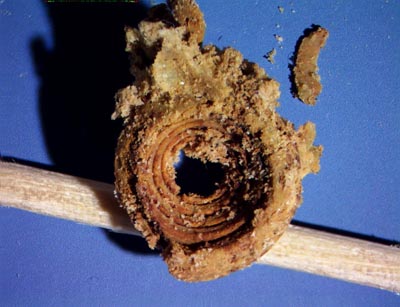 Click image to see Full Size
Click image to see Full Size
| Bottom
side coiling away from the viewer. Beautiful tight coils! |
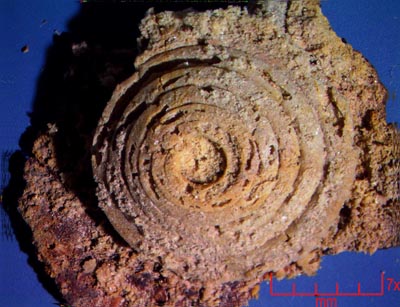 Click image to see Full Size
Click image to see Full Size
| Another
specimen with a top view here. The apex rises toward the viewer
here in this rather flat view. |
Gastropods Type 2:
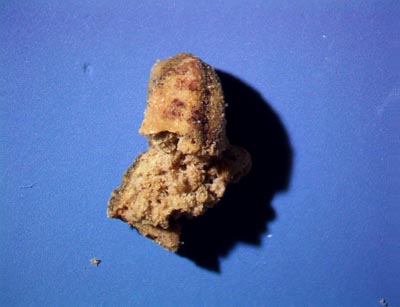 Click image to see Full Size
Click image to see Full Size
| Resembling
a Bellerophontid, these gastropods had ribbed shells. |
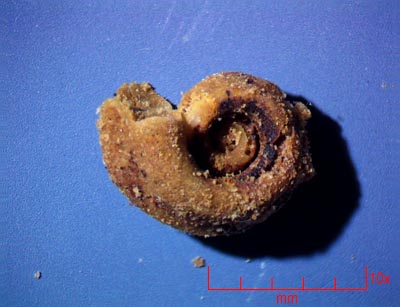 Click image to see Full Size
Click image to see Full Size
| Tight
coiling shown here. |
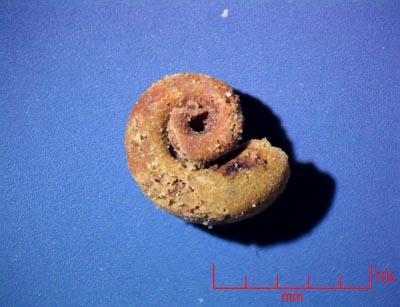 Click image to see Full Size
Click image to see Full Size
| Robust
coils on this infill. |
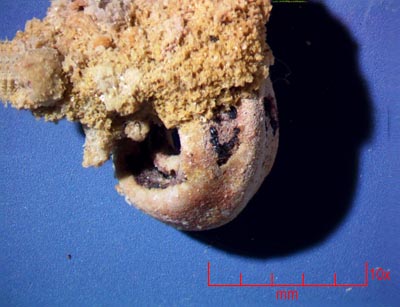 Click image to see Full Size
Click image to see Full Size
| Another
good specimen showing the central median ridge on the outside
of the coils. Again, very Bellerophontid-esk. |
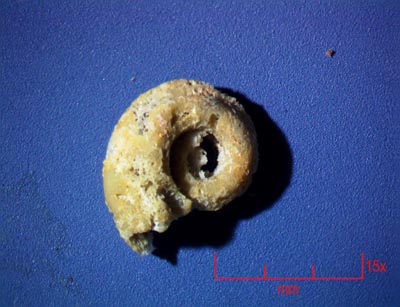 Click image to see Full Size
Click image to see Full Size
| Beautiful
external cast. |
Gastropods Type 3:
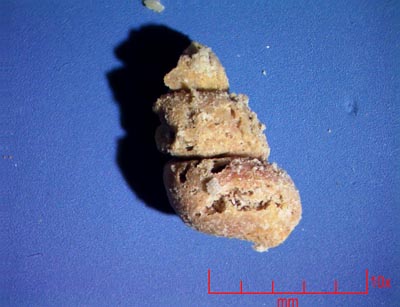 Click image to see Full Size
Click image to see Full Size
| Turriculate
form gastropods also were found. |
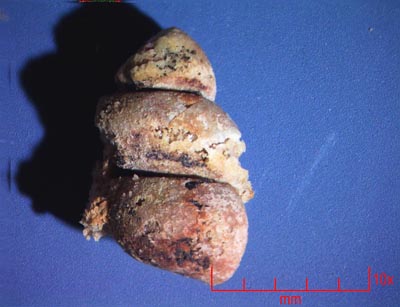 Click image to see Full Size
Click image to see Full Size
| One
of the very largest. |
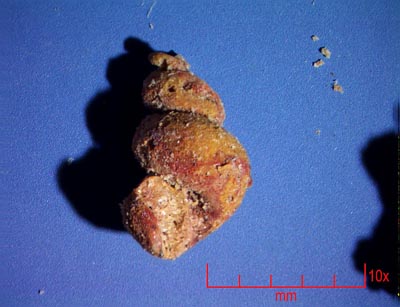 Click image to see Full Size
Click image to see Full Size
| External
cast of a very well preserved specimen. |
Gastropods Type 4:
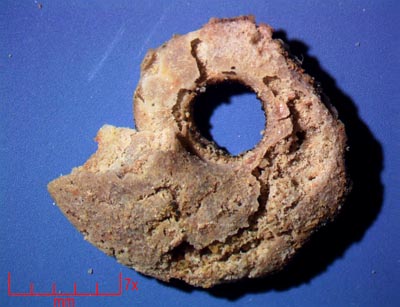 Click image to see Full Size
Click image to see Full Size
| Flat
and planispiral. That marks the charecteristics of this largest
gastropod group found. |
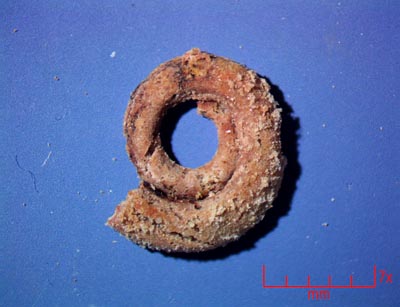 Click image to see Full Size
Click image to see Full Size
| Large
and smooth exteriors with large flat looping coils. |
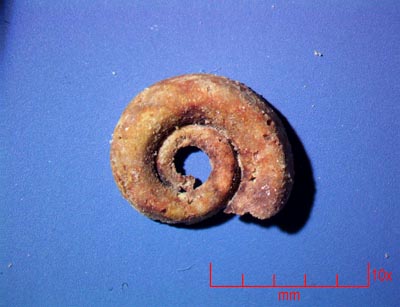 Click image to see Full Size
Click image to see Full Size
| One
of the most complete found. This species by far was the most
common gastropod in the El Paso. | 
Paleo HOME
|
 Dawn collects Ordovician fossils in the El Paso at Dos Cabezas
Dawn collects Ordovician fossils in the El Paso at Dos Cabezas
 Dawn collects Ordovician fossils in the El Paso at Dos Cabezas
Dawn collects Ordovician fossils in the El Paso at Dos Cabezas